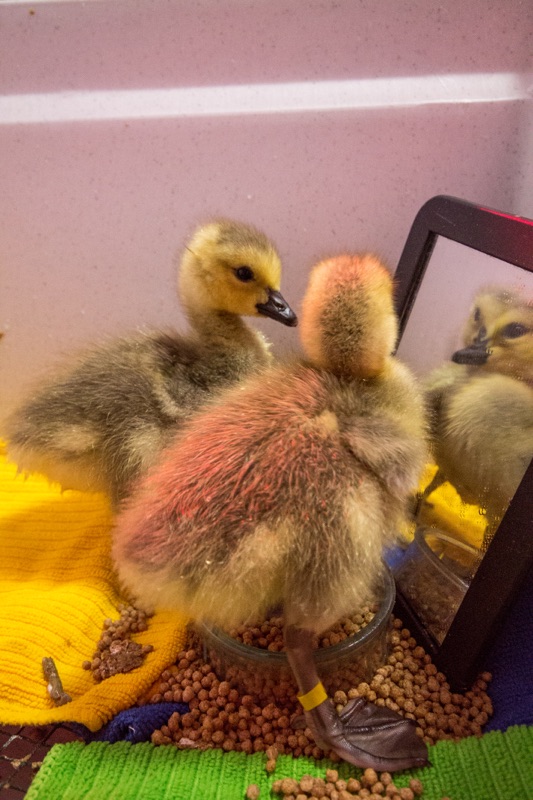What is animal enrichment?
- Enrichment can refer to the behavioural or environmental enhancement of an animal’s surroundings while in captive care. Enrichment is an attempt to improve the physiological and psychological well-being of animals in care.
How does AIWC provide enrichment?
When animals are brought into AIWC, they are often coming in from high-stress situations and showing signs of that stress. Since wildlife does not tend to favour interactions with people, there is minimal contact with patients once they are in AIWC’s care, other than for feeding, medical intervention or rehabilitation. This helps to reduce the amount of stress on the patients, as well as to keep them wild by avoiding any kind of imprinting or habitualization from occuring.
AIWC tries to minimize the amount of stress on the patients in care, and one way of doing this is by enriching their environment. Some examples of enrichment include:
- Scattering or hiding food throughout an enclosure for an animal to forage can provide stimulation and enrichment.
- Providing a lonely patient with some comfort by using a mirror. Mirrors are often placed in enclosures with song birds, or baby ducks that come in alone or are very few in number.
- Giving baby patients like robins and ducklings a stuffed animal that looks similar to them or their parents as a way to give them familiarity.
- Providing patients with enrichment items such as trees to perch or climb. (Enrichment items like trees also gives patients places to hide when staff or volunteers enter their enclosures to provide food or to clean, thereby minimising patient stress).
- Providing not only a nutritional diet but one that includes a mixture of several different types of food that are not always the same from meal to meal, making it interesting and stimulating for the patient too.
It is not always possible for all patients to receive environmental enrichment immediately due to many factors. For example, if a patient is badly injured, it may not be beneficial to have additional items in their enclosures for risk of further injury. However, once they have physically recovered they are moved to larger enclosures, and these enclosures tend to have items such as trees, perches, tubs of water to bathe in, or areas of dirt to roll in.
Enrichment is something that people provide for their own companion animals (think of the last treat you gave your dog or cat, or the last toy they played with), all with the end-goal of making them happy. At AIWC, we try to keep our patients happy through enrichment!
How can you help?
- You might be wondering if there is any way you can help AIWC provide enrichment to our patients, and there is! AIWC has a wish list of items that gets updated often. You can find it here: https://www.aiwc.ca/support-us/wish-list/
- As a non-profit organization, any donation helps. If you do not have the means to provide a monetary donation, there may be items on our list that you have at home but don’t need to keep anymore. We are always happy to accept these items!
- Christmas is a great time of year for AIWC because after the decorations come down, you can donate your real Christmas tree to us! Real trees that are donated become much-loved environmental stimuli for AIWC patients.
By Tayler Hamilton, AIWC Volunteer
Sources:
Honolulu Zoo Society. 2016. Animal Enrichment. Available online at: https://www.honoluluzoo.org/support-the-zoo/animal-enrichment.html/ Accessed December 19, 2016.
Toronto Zoo. 2016. Animal Enrichment. Available online at: https://www.torontozoo.com/ExploreTheZoo/enrichment/. Accessed December 19, 2016.






